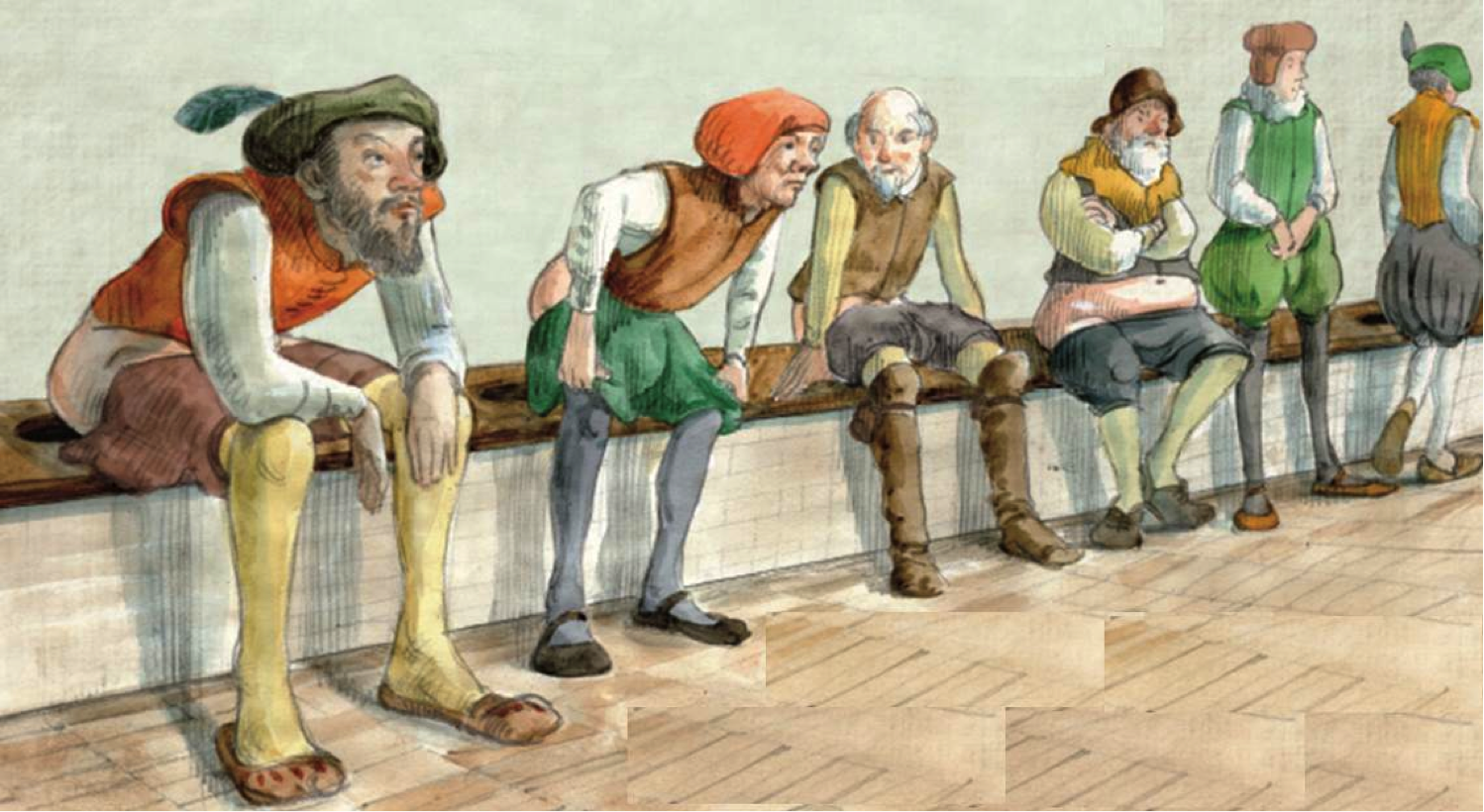Henry VII, the founding Tudor monarch, is infamous for many reasons, but his rather unique solution to the issue of poor sanitation in his court has enshrined him as the king of excess, the ruler of relief, and the builder of giant toilets. His notorious moniker, “Henry VII the Poop Palace King,” stems from his construction of a two-story toilet that could accommodate up to 28 people simultaneously.
While the king and his courtiers enjoyed the luxury of private chambers, the same couldn’t be said for the servants. To provide relief to the less fortunate classes, the Great House of Easement was erected, a communal bench with a multitude of holes cut through it. There were no walls, not even stalls – this was essentially a public toilet.
Regular cleaning of the tank was mandatory, and the Boys known as “gong scourers” were tasked with this demeaning job. Alexander Pope’s Dunciad alludes to these gong scourers being so accustomed to the fetid smell that they would sleep in the filth and gain immunity. The task was no easy feat – some reports suggested the tank was so full that it reached head height.
The communal toilet was called the House of Easement, a fanciful title that disguised the grim reality of communal defecation. The communal bathroom was a far cry from the private sanitary facilities enjoyed by the king and his courtiers. However, the House of Easement was an improvement over the unsanitary conditions that prevailed during Henry VII’s time. At that time, the miserable state of hygiene within London’s streets led to the closure of the Fountain, a public water source located near St. Paul’s Cathedral, owing to the deplorable sanitary conditions.
The House of Easement wasn’t an extravagant lavatory thought up by Henry VII out of whimsy. It was a practical solution mired in the societal issues of the time – lack of sanitation and social inequality. The impact of the Great House of Easement was twofold, as the solution provided relief to the lower classes while simultaneously highlighting the stark divide between the rich and poor.
The House of Easement was just one example of how the Tudor monarchy attempted to tackle social issues during that time. The stationary portcullis, for instance, was the precursor to modern traffic lights, introduced by Henry VII to keep the streets clear and hence improve the public’s health. However, while the king’s heart might have been in the right place, his methods often fell short.
In hindsight, some might argue that the Great House of Easement’s construction ended up as a display of the excesses characteristic of the Tudor age. However, it was also a testament to the social conscience, albeit misguided, of the Tudor monarchs. By constructing such facilities, they demonstrated their awareness of social issues, leading to a more progressive outlook compared to their contemporaries.
In conclusion, the House of Easement, the poop Palace, and the notorious monarch were a triad that epitomized the Tudor era – a mix of excesses, innovation, and social conscience. Henry VII’s sanitary legacy might have been unsavory, but it certainly serves as an enthralling facet of history that we can all defecate and marvel at.



